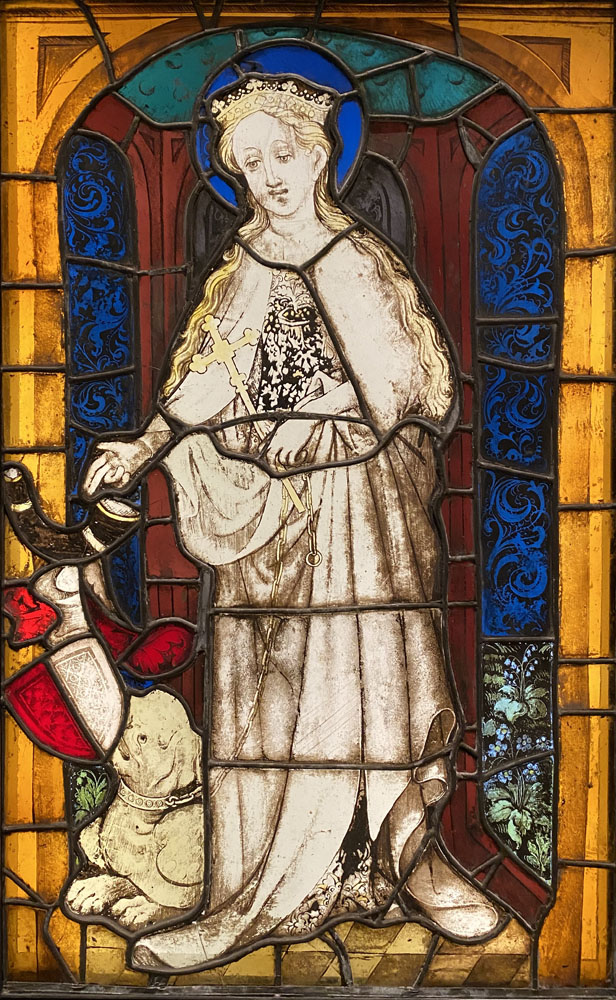
St. Margaret
German, circa 1420-30
Pot-metal and colorless glass, oxide paint, silver stain.
Getty Center, Los Angeles, California
In her legend St. Margaret overcame the devil in the form of a dragon by making the sign of the cross, so this image follows the tradition of picturing her with a dragon and a hand cross. Several versions say that at her martyrdom a dove descended from Heaven and placed a crown on her head, thus the crown in this image.
With her right hand, the saint blesses the coat of arms of the donor. Her left hand holds both the cross and a chain linked to the dragon's collar.
The flowers at the base of the door pictured on Margaret's left are bluebells. I have found no bluebells in her legend or in the many St. Margaret images that I have studied. Their presence here may reflect a medieval survival of the "superstition" noted in Isidore's Etymologies that the plant can banish "all evils" if hung at one's door.1 In the seventh of the Unicorn Tapestries, two bluebells grow alongside the unicorn. Freeman suggests that they represent the animal's safety from harm, citing the remark in Isidore.2 It would appear, then, that the "superstition" about bluebells continued into the later Middle Ages and that they are included in this painted glass to confirm Margaret's capacity to avert whatever "evils" that may come.
View this image in full resolution.
Read more about images of St. Margaret.
Photographed at the site by Richard Stracke, shared under Attribution-NonCommercial-ShareAlike license.